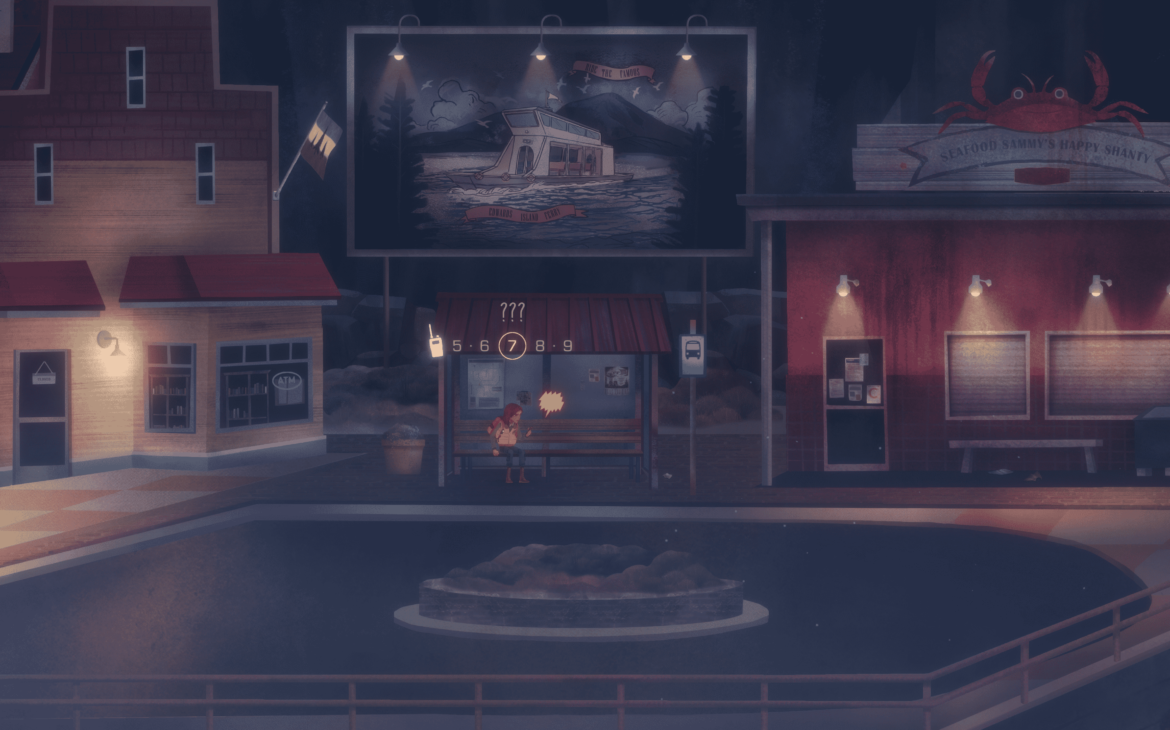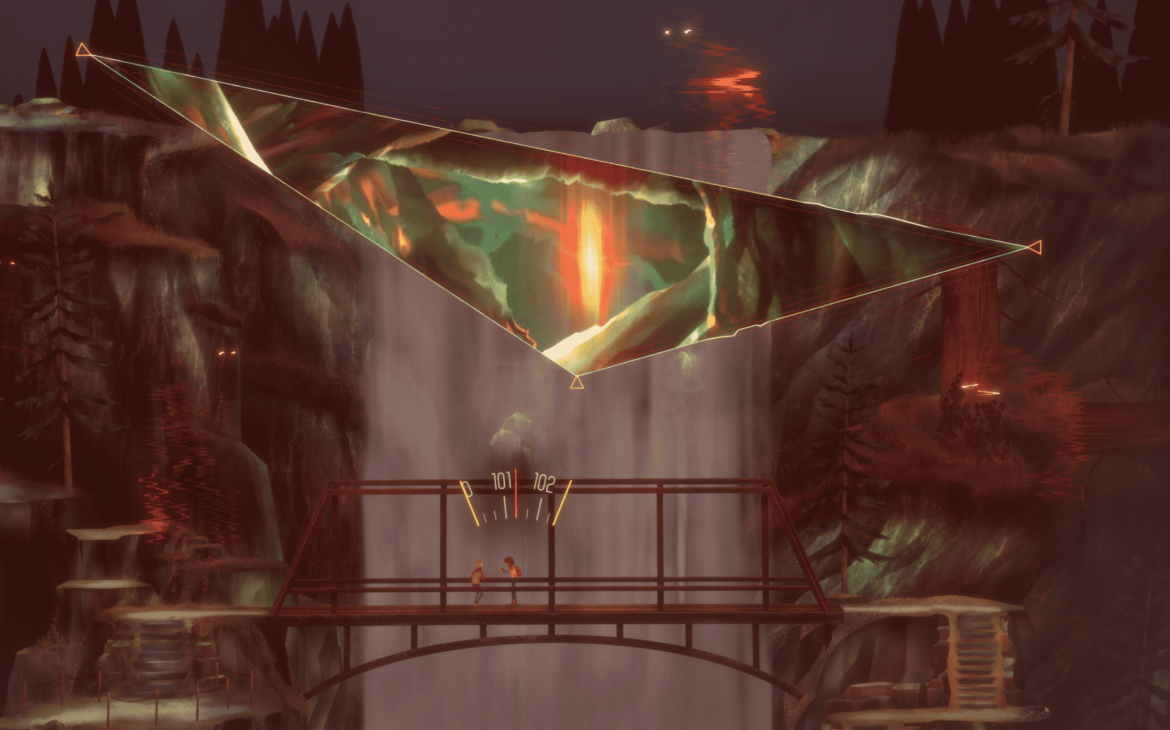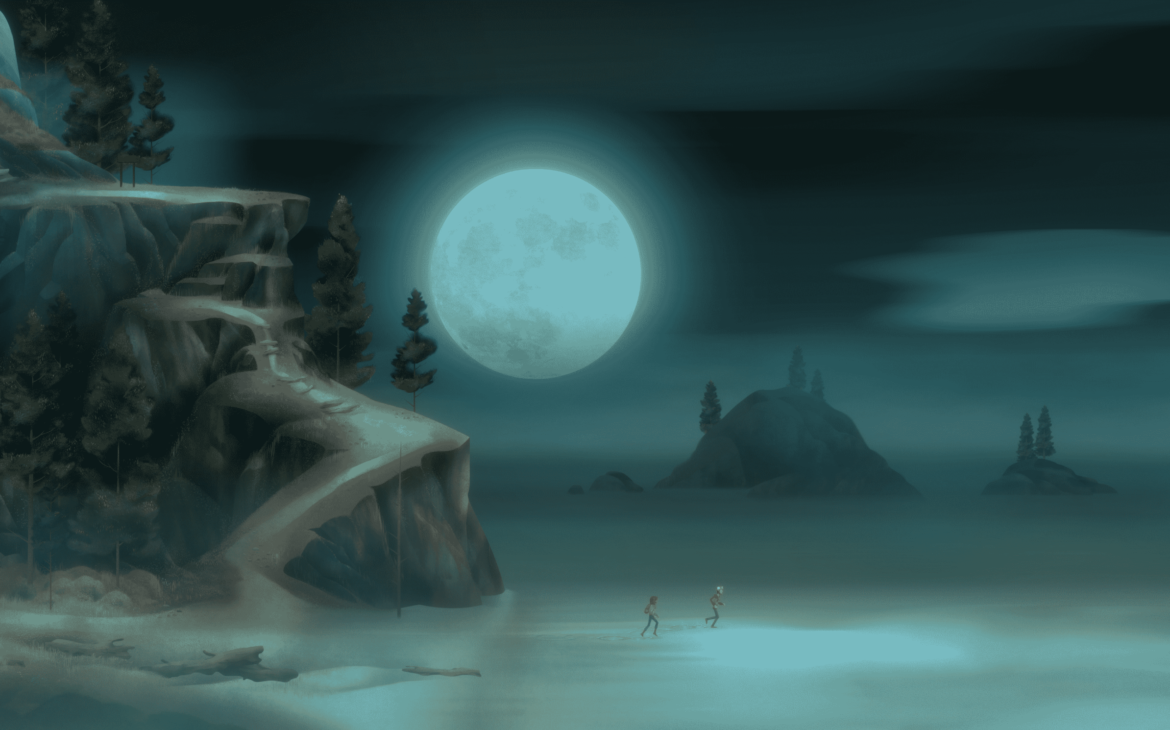If you go back far enough, somewhere on the podcast, you’ll hear me say that the first Oxenfree game was the best 79p I’ve ever spent in my life. I was late to the party for the first edition of the game, and grabbed it on a sale. However, I enjoyed every second I played of the first one. I have been eagerly awaiting a sequel to Oxenfree for some time. Albeit probably less than fans who picked it up immediately, but nonetheless, when it finally dropped I was very ready to jump back in.
For those who need a refresher or just want to know about Oxenfree as a series then read on; word of warning though there will be slight spoilers in the next few sentences if you have not dived in. The series is a supernatural adventure game that follows Alex as she heads over to Edwards Island for a weekend party. One of her friends explains the Island is full of mysterious goings-on and rumoured disturbances with radio frequencies and was once a military base. When Alex experienced these phenomena for herself, she creates a tear in reality and over time her friends become possessed and time starts to loop. They must try and close the tear and get back to the right dimension before their time runs out and they get stuck in the alternate reality.
The game has an interesting mechanic with which you can form, break and maintain relationships with each and every character based on your responses to dialogue options. Oxenfree has multiple endings depending on your actions and I found myself playing the game multiple times to try and see what each outcome was whilst always being interested in the type of dialogue I could choose and seeing how it could develop depending on my choices.
I had hoped that Oxenfree II: Lost Signals was going to take this idea and ramp this up to the next level – more interesting dialogue pathways, differing relationships, and different routes to the end. It doesn’t. Whilst some of my frustrations with the first entry are not in the second game, I feel like Oxenfree II: Lost Signals lost a lot of its magic along the way.

Groundhog Day
Oxenfree II: Lost Signals follows the adventure of Riley, who is starting her first day on the job planting transmitters along the coast to study anomalies as part of an environmental group. The town of Camena has started to experience electromagnetic frequencies that are messing with the town’s official signals, and air traffic control. Riley has two days to plant as many transmitters as possible. It appears that the disruptions that once came from Edwards Islands have started to disrupt radio signals on Camena.
It is important to note that it is not completely necessary to play the first installment of Oxenfree. Whilst it would be a crying shame if you didn’t, everything is recapped in the dialogue as you go through the beginning of the game. Spoiler alert! – The theory behind the disrupted radio frequencies is that during World War I there were people who died in a submarine attack and they are stuck between life and death trying to get back to their own dimension.
In Oxenfree II, this plot point is taken as a given almost immediately with Riley already able to jump between different timelines including her own future. Riley is forced to meddle with machinery to try and fix the quick time jumps and get back to her own dimension.
Are You There? Over.
The visuals and art style are very much instantly recognisable from the first installment. The environments look like a beautiful oil painting or hand-drawn chalk painting. Whilst the location is different from the first one, some parts do look similar to Edwards Island replicating that creepy yet tranquil atmosphere. The controls of Riley herself feel much less sticky, and whilst she still moves at the same slow pace as Alex did in the first series, this character feels much more malleable.
Riley has access to a Walkie Talkie, a Radio, and a map. The map is quite sizable and is accompanied by a notebook to allow you to keep track of where you may be or what you need to do next. Riley will write this down herself, or circle locations and make comments on your story along the way. The Walkie Talkie allows the introduction of many different characters. Whilst Alex went on a weekend trip with a group of friends, this time your day job only includes one main character who can follow along for the ride – a Mr Jacob Summers.
Jacob is the classic high school nerd, who stayed in his hometown after leaving school and is keen to know more about the rumours that not only surround Edwards Island but the disruption in frequencies that has reached Camena. You may remember Maggie Adler from the first game, a character who hypothesised and did much research into Edwards Island whilst living on the Island. Jacob and Maggie knew each other and Jacob believes Maggie’s theories. Jacob is keen to share his learning and find out more.
The Walkie Talkie allows you to speak to Evelyn, your boss, and many different characters you may find along the way during your night shift. Interestingly it’s possible to not find everyone or really explore their story. I still had a few channels missing by the end of my first playthrough. Sometimes it will be up to you, the player, on how frequently you may choose to interact with your Walkie Talkie and the people on the other end.

Radio Static
I don’t want to discuss the story in depth because that would lead to spoilers. I will say, however, that the sequel has a much more unnerving feel to it throughout. There was the odd jumpscare and the whole atmosphere of the game felt a touch more thrilling than before. It does a great job of building tension and the story does potentially bring the series to a close.
One bugbear of mine in the first game was the constant back and forth you would have to do along the island. There were times where you would walk the same stretch of land four or five times, and when you play a game that clearly is meant for replaying, those parts can get very old very quickly. For a game that has a story involving time jumping, and often location jumping and reality dimensional shifts, why on earth would the sequel not include a small mechanic to fast travel?
This was one thing I was hoping for but Lost Signals will also involve the same back and forth with the same slow navigation that you all know and maybe don’t love. Whilst the repetitive navigation is markedly less, it is easy to get turned around. At one point you have to navigate through many caves, and for some unknown reason it was not letting me travel to the next location and I turned myself around so many times exploring caves hoping that that would help me get to a certain area. It did not, but the time it took due to the pace Riley moves, made me snap out of the game’s immersion. That suspension of disbelief was a quality I really appreciated in the first one.
The complete story of Oxenfree has been one that is not completely understood at all times, you kind of walk away thinking, “Yeah, I think I got it,” but also somehow feeling that you simultaneously have no clue what is happening. It’s a grey area that is quite enjoyable to be in and the sequel manages to capture this just as well.

Stationed On The Island
To me, the ending felt a little lacklustre. There was a warning at the beginning of the game that some choices would likely lead to feeling emotional, or mental discomfort, but I felt that only to be true for really one decision. I felt like the ending in the first game was much more captivating for me. Lost Signals kind of felt obvious in what needed to happen, and other replays would only be present to see what the other outcomes were as opposed to accidentally landing on a really random ending.
I remember feeling like my second playthrough of the first Oxenfree came with an entirely different feel to it. Even partway through my second playthrough of Lost Signals, I chose completely different options and dialogue, yet it feels like some of the dialogue is exactly the same, and doesn’t give me the same responsive feeling the first game did. The first one had such an interesting option where you could do the whole game not saying a single word and the responses you would get from characters would be so interesting. They’d make constant reference to the fact you weren’t speaking, their demeanor would really change throughout the game towards you. I didn’t really feel that for this one. Also, the silent playthrough is impossible which is a real shame.
I did play around with being ‘mean’ and some of those responses still gathered the same response as before. It made my second playthrough feel quite uninteresting and made me impatient to get to the parts I knew would make a big difference, whereas, in the first game, I couldn’t really tell where those big differences would branch off. It feels like a lot of the ending depends on some of the late game dialogue choices, and without chapter select, it did feel like a chore to have to go back and try and speed through the first few scenes.
Overall, Oxenfree II: Lost Signals does keep a lot of the formula that feels familiar. It was great to be a part of the story again. It’s certainly more unnerving than the first one, but keeps the same environment, humour, and great voice acting. However, a sequel is supposed to capture everything you love and then elevate it, and for me, Oxenfree II: Lost Signals does not feel massively elevated, despite an interesting story, and enjoying being part of the world again. It absolutely is still worth jumping into, but don’t expect the same shock value it may have once had on you.
Oxenfree II: Lost Signals captures most of the elements that stood out from the first game. Whilst it continues the story of Edwards Island, the sequel doesn’t elevate the series like a sequel should. You’ll still enjoy being part of the world again, but despite returning to an unnerving new adventure, Lost Signals feels less dynamic and responsive than the first in the series.

Oxenfree II: Lost Signals is available now on PlayStation 4 and 5 (review platform), PC via Steam, IOS/Andriod and Nintendo Switch.
Developer: Night School Studio
Publisher: Netflix Games
Disclaimer: In order to complete this review, we were provided with a promotional code from the publisher.
For our full review policy, please go here. If you enjoyed this article or any more of our content, please consider our Patreon
Make sure to follow Finger Guns on our social channels. Twitter, Facebook, Twitch, Spotify or Apple Podcasts – to keep up to date on our news, reviews and features
